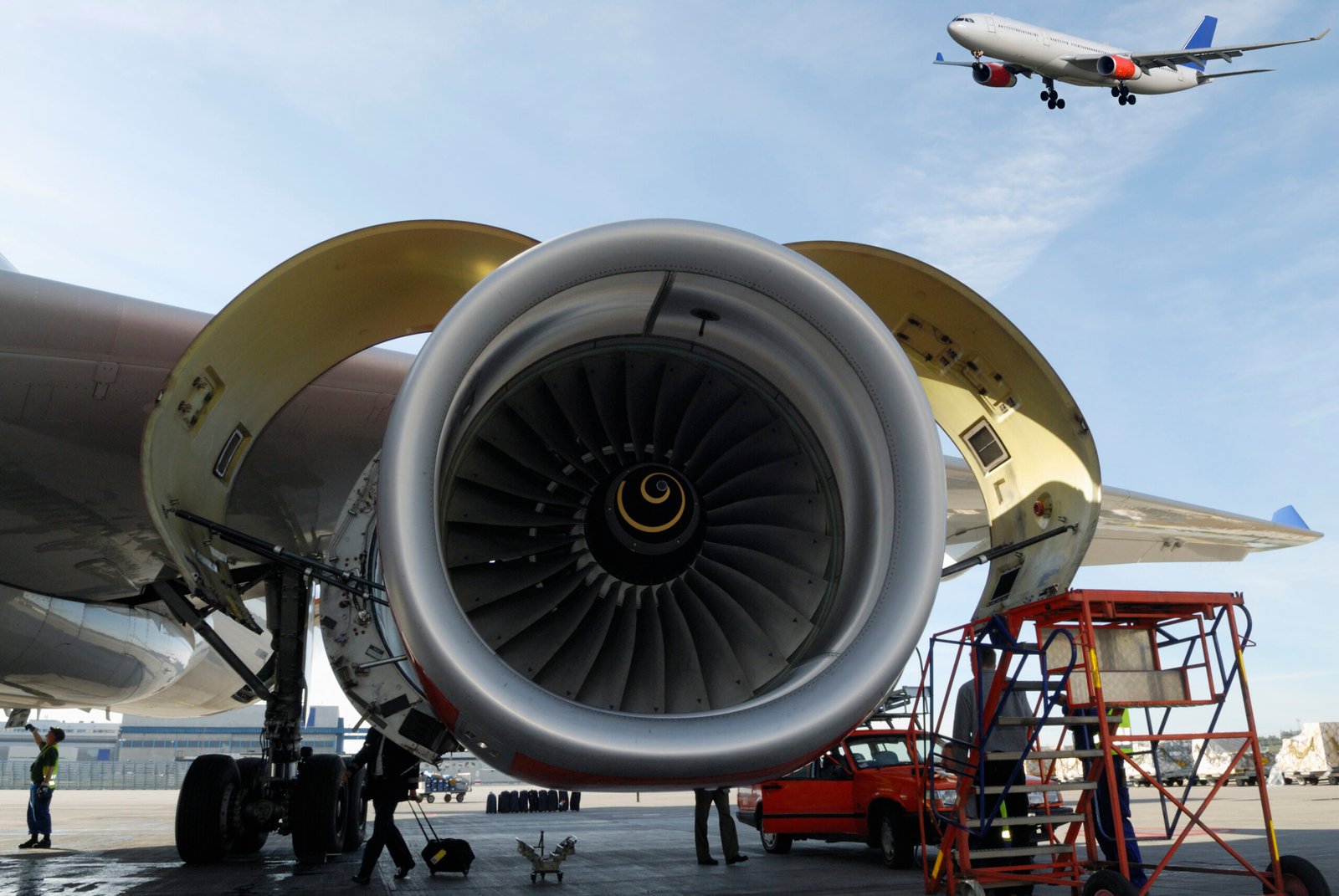Pilots
Aviation Adventures: The Untold Stories of Pilots and Their Planes
Aviation is not just a mode of transportation; it’s a thrilling adventure that transforms dreams into reality. Whether soaring through clouds or navigating complex airspace, pilots share exhilarating tales that often go untold. But behind every extraordinary flight lies rigorous training and education—a journey that begins in aviation schools.
*Types of Aviation Courses**
Aviation schools cater to various interests and career paths within the field. For aspiring pilots, private pilot courses provide foundational skills for flying small aircraft, while instrument rating courses delve deeper into navigation and weather conditions. Commercial pilot programs prepare students for a professional career, teaching advanced maneuvers and business operations associated with aviation.

For those intrigued by the technical side, maintenance technician courses cover aircraft systems, troubleshooting, and repair techniques—essential knowledge for keeping planes in top shape. Additionally, specialized programs like flight instructor ratings allow seasoned pilots to share their expertise with the next generation of aviators.
Flight simulation offers an immersive experience without leaving the ground. Many institutions now provide state-of-the-art simulators that replicate real-world flying scenarios. These setups allow students to practice emergency procedures or complex maneuvers in a controlled environment before taking to the skies.
*Exploring Aviation Blogs and Websites**
In this digital age, countless resources are available online for aviation enthusiasts. Blogs like “AirlineReporter” offer insights into airline industry trends while showcasing unique travel experiences from frequent flyers. “The Flying Engineer” delves into technical discussions about aircraft maintenance and innovations in engineering—perfect for those who want to merge passion with profession.
Social media platforms also play a significant role in connecting aviators and enthusiasts alike. Instagram accounts such as “@pilotlife” showcase breathtaking aerial photography alongside personal stories from pilots around the globe. On Twitter, hashtags like #AvGeek create vibrant communities where users can share news articles, flight experiences, or even their favorite aviation memes.
YouTube has become an invaluable resource too; channels like “Mentour Pilot” break down complex aviation topics into comprehensible segments while sharing real-life cockpit experiences that inspire awe among budding aviators.
*FAA Flight Schools: Your Gateway to the Skies**
When it comes to formal training in the United States, FAA-accredited flight schools stand out as beacons of excellence. These institutions comply with stringent regulations set forth by the Federal Aviation Administration (FAA), ensuring quality education for future pilots.
Many recognized schools offer comprehensive programs tailored to different skill levels—whether you’re starting from scratch or looking to advance your credentials with multi-engine ratings or type-specific endorsements. With hands-on instruction paired with theoretical coursework, students gain a holistic understanding of what it means to be part of this dynamic industry.

Additionally, simulators play an essential role within these schools’ curriculums. They provide practical experience without exposing students to real-world risks during crucial learning phases—allowing them to develop confidence before taking control of an actual airplane.
In conclusion, aviation is filled with remarkable stories shaped by passionate individuals who have dedicated their lives to mastering the art of flying. The journey begins at aviation schools where diverse courses lay the groundwork for future adventures in the skies—enriching our understanding of both technology and human perseverance along the way! So buckle up; your own aviation adventure awaits!
Up in the Air: The Fascinating History of Aviation Milestones
The journey of aviation is a breathtaking tale that spans over a century, filled with daring pioneers, technological marvels, and countless milestones that have transformed the way we travel. As we explore this captivating history, it’s essential to recognize how education and resources have played pivotal roles in shaping the future of flight.

Aviation schools today offer a plethora of courses tailored to various careers within this dynamic field. Among these are traditional pilot training programs, which focus on both private and commercial pilot licenses. These courses delve into crucial areas such as navigation, meteorology, and aircraft systems. For those aspiring to become air traffic controllers or aviation managers, specialized programs exist that cover topics like airport operations and air traffic management.
Another exciting branch involves maintenance and engineering; students can pursue degrees in aircraft maintenance technology or avionics. These technical courses equip future professionals with the skills necessary for ensuring safety and efficiency in flight operations. Additionally, some schools emphasize flight simulation training, providing an immersive experience that replicates real-world flying conditions without ever leaving the ground.
As knowledge continues to evolve in the aviation sector, staying informed has never been easier thanks to an abundance of blogs, websites, and social media platforms dedicated to this exhilarating field. Websites like Airliners.net serve as treasure troves for aviation enthusiasts seeking high-quality photos and discussions related to commercial flights worldwide. Similarly, FlightAware offers real-time flight tracking data—a must-have resource for anyone interested in keeping tabs on their favorite airlines.
For those looking for educational content or industry news updates, sites such as AOPA (Aircraft Owners and Pilots Association) provide valuable insights into legislative changes affecting pilots while also offering tips for safe flying practices. Aviation blogs like The Points Guy not only explore travel but dive deep into airline loyalty programs—an essential consideration for frequent flyers eager to maximize their miles.
Social media platforms are teeming with vibrant communities where aviation aficionados connect daily. Twitter accounts like @AirlineGeeks keep followers updated on industry trends while Instagram showcases stunning aerial photography through hashtags such as #aviationlovers or #pilotlife. Facebook groups also foster camaraderie among aspiring aviators who share advice or experiences navigating their flight training journeys.
When it comes down to practical training options endorsed by the Federal Aviation Administration (FAA), numerous accredited flight schools across the United States stand ready to guide future pilots toward success. Institutions like Embry-Riddle Aeronautical University lead the charge with comprehensive programs aimed at equipping students with both theoretical knowledge and hands-on experience.
Moreover, many airplane schools now integrate advanced simulators into their curricula—these sophisticated tools replicate various aircraft types under diverse conditions while allowing students ample opportunities to hone their skills without risk. This blend of simulation alongside actual flight time creates well-rounded aviators ready to tackle real-world challenges once they take off from the runway.
In conclusion, the history of aviation is not merely about soaring through clouds; it’s also a testament to human ingenuity fueled by education and community support. By embracing new technologies and fostering connections among enthusiasts worldwide—from blog readers seeking information to aspiring pilots sharpening their skills—we ensure that each milestone reached propels us further up into an exhilarating sky filled with possibilities!
A Pilot’s Perspective: Insider Tips for Aspiring Aviators
Embarking on the journey to become a pilot is an exhilarating adventure filled with dreams of soaring through the skies. However, that path can be paved with challenges and uncertainties. As an aviator who’s navigated this course, I’m excited to share essential insights, particularly tailored for those looking to take flight in their aviation careers.
*Choosing the Right Aviation School**
One of the most crucial steps in your journey is selecting an aviation school that aligns with your goals. Aviation schools typically offer various types of courses catering to different aspirations:
1. **Private Pilot License (PPL):** Ideal for beginners, this course introduces you to the fundamentals of flying and grants you permission to fly solo or with passengers under visual flight rules.
2. **Commercial Pilot License (CPL):** Aimed at serious aviators wanting to turn their passion into a profession, this program dives deeper into navigation, meteorology, and advanced flying techniques.
3. **Instrument Rating:** For those who wish to fly in varying weather conditions, this training teaches pilots how to control aircraft using instruments rather than visual references.
4. **Flight Instructor Certificate (CFI):** If sharing knowledge excites you, consider becoming a flight instructor. This certification allows you to teach aspiring pilots while honing your own skills.
5. **Airline Transport Pilot License (ATPL):** The pinnacle of pilot certifications, this license is required for those aiming for careers as airline captains or other high-level positions within commercial aviation.
Each of these pathways opens doors not only to personal fulfillment but also to diverse career opportunities across the aviation sector.
*Explore Online Resources**
In today’s digital age, connecting with fellow enthusiasts and seasoned professionals has never been easier. Here are some valuable online resources where aspiring aviators can find inspiration and information:
**Aviation Blogs:** Websites like *The Flight Deck* and *Aviation Weekly* provide insights from industry veterans about trends, tips, and experiences that could shape your understanding of aviation.
**Websites:** Check out *SkyVector*, which offers route planning tools alongside aeronautical charts crucial for every pilot’s toolkit.
**Social Media Sites:** Platforms like Instagram and Twitter are brimming with accounts dedicated solely to aviation content—follow hashtags like #PilotLife or #AviationGeek for daily doses of aerial inspiration!
Engaging with these platforms can help you stay updated on industry developments while also allowing you to network within the community.
*Training Through FAA-Approved Schools**
When it comes down to practical training, FAA-approved flight schools are indispensable resources that provide structured learning environments equipped with top-notch facilities:
1. **Flight Schools:** These institutions often feature experienced instructors and modern fleets that cover everything from basic flying skills to advanced maneuvers necessary for commercial piloting.
2. **Airplane Schools:** These specialized schools focus on specific aircraft types or capabilities—perfect if you have a particular interest in flying certain planes!
3. **Simulators:** Many programs now incorporate state-of-the-art simulators that mimic real-world flying scenarios without leaving the ground! This technology helps enhance decision-making skills under pressure while ensuring safety during initial training phases.

In conclusion, whether you’re just starting your journey or looking toward advanced training options, remember: every pilot was once an aspiring aviator fueled by passion and determination. With the right education path chosen from reputable sources online or through FAA-approved schools—and a savvy approach towards networking—you’ll be well on your way toward achieving those lofty dreams! So gear up; adventure awaits!
A Pilot’s Perspective: Adventures in the Skies
As the sun rises and casts a golden hue across the horizon, the thrill of flying beckons. For those of us fortunate enough to don a pilot’s wings, every ascent into the skies is an adventure waiting to unfold. But the journey to become a skilled aviator is paved with rigorous training, innovative technology, and continuous education.
Aviation has evolved dramatically over the past few decades. Today’s pilots are equipped with advanced tools and technologies that were once confined to science fiction. Flight simulators have taken center stage in pilot training, providing an immersive environment where aspiring aviators can hone their skills without leaving the ground. These high-tech devices replicate real-world flying conditions—complete with turbulence, weather changes, and emergency scenarios. Simulators not only save costs but also allow for repeated practice of critical maneuvers until they become second nature.

Alongside simulators, online resources for aviation enthusiasts and professionals abound. Several blogs and websites cater to pilots at all stages of their careers. Some notable mentions include “The Pilot’s Blog,” which shares personal experiences from aviators around the world, and “Flying Magazine,” offering insights into aviation news and trends. Social media platforms like Instagram and Twitter have become bustling hubs for pilots to connect; hashtags such as #PilotLife or #AvGeek draw in thousands sharing breathtaking aerial views or snippets from their cockpit adventures.
For those looking to formalize their aviation knowledge, numerous online courses and ground schools are available today. Organizations such as Gleim Aviation or King Schools provide comprehensive training programs covering everything from private pilot licenses to advanced certifications. The convenience of studying at home while balancing work commitments makes these programs incredibly appealing for aspiring pilots eager to take flight.
But let’s not forget about job opportunities within this dynamic industry! The demand for skilled aviators continues to rise as airlines expand operations globally. Pilots can find positions ranging from commercial airline jobs to corporate flying roles or even cargo transport services. Additionally, niche markets like agricultural aviation or aerial photography provide unique pathways for those looking to carve out a distinctive career in the skies.
We’re also witnessing a revolution courtesy of drones—a game changer in both recreational use and industry applications! From delivering packages to surveying landscapes, drones offer endless possibilities while requiring specific FAA regulations for operation. Pilots who venture into this realm must familiarize themselves with Part 107 rules governing commercial drone usage.
For anyone interested in exploring more about aviation regulations or seeking guidance on becoming a certified pilot, resources from the Federal Aviation Administration (FAA) are invaluable. Their website provides comprehensive information on licensing requirements, safety guidelines, air traffic control procedures, and much more essential data that any aspiring aviator should know.

In conclusion, being a pilot is more than just operating an aircraft; it’s about embracing technology through flight simulations while continuously learning through online courses and connecting with fellow aviation enthusiasts across various platforms. With evolving regulations surrounding drones and consistent demand for qualified professionals in commercial aviation, there’s never been a better time to pursue your passion for flying! So strap in—your adventure awaits high above the clouds!
Flying Green: How Sustainable Practices are Transforming Aviation
In recent years, the aviation industry has been undergoing a remarkable transformation, driven by the urgent need for sustainable practices. Amidst growing environmental concerns, innovative technologies and education are paving the way for a greener future in flying. From advanced simulators to drones, the landscape of aviation is evolving rapidly.

One of the cornerstones of this evolution is technology training. Flight simulators have become indispensable tools in pilot training programs. These sophisticated machines not only provide aspiring pilots with a realistic flying experience but also allow them to practice emergency procedures and understand complex aircraft systems without any risk. With features that mimic real-world weather conditions and air traffic scenarios, simulators are crucial for preparing pilots to handle challenges they might encounter in actual flight situations. Moreover, as airlines increasingly prioritize sustainability, training programs are beginning to incorporate eco-friendly practices into their curricula.
For anyone looking to dive deeper into the world of aviation or enhance their knowledge about green initiatives within the sector, numerous blogs and websites serve as excellent resources. Notable recommendations include “Airline Reporter,” which covers industry news and trends; “Aviation Week,” offering insights into technological advancements; and “GreenAir Online,” dedicated specifically to sustainable aviation developments. Social media platforms like Instagram and Twitter also host vibrant communities where enthusiasts share insights, experiences, and discussions about sustainable flying practices.
Online courses have surged in popularity over recent years, providing flexible learning opportunities for aspiring pilots and aviation professionals alike. Ground schools now offer comprehensive programs covering everything from aircraft systems to navigation techniques online. Institutes such as Embry-Riddle Aeronautical University provide courses tailored to modern demands—focusing on sustainability as part of their curriculum. Whether you’re aiming for a career as a commercial pilot or exploring roles in airport management or aerospace engineering, these online resources can help you gain valuable knowledge while adhering to your own schedule.
Drones represent another fascinating aspect of this transformative phase in aviation. As unmanned aerial vehicles (UAVs) become more commonplace, industries beyond traditional aviation are leveraging their potential for enhancing efficiency and reducing carbon footprints. Drones are employed in agriculture for crop monitoring; they assist first responders during emergencies; even package delivery services are experimenting with UAVs as an alternative transport method that could reduce road congestion and emissions.

For those interested in pursuing careers within this dynamic sector, job opportunities abound—from piloting aircraft to working on environmental strategies at major airlines. The FAA’s website is an essential resource for aspiring aviators wanting information on regulations, safety guidelines, and certification processes necessary for various roles within the field.
As we witness shifts toward greener practices across all facets of life—including transportation—the aviation industry is stepping up its game with commitment and creativity. By embracing technology-driven solutions like flight simulators and drones while fostering educational opportunities through online courses and ground schools, there’s hope that we can achieve more sustainable air travel without compromising safety or quality.
In conclusion, flying green is not just a trend; it’s becoming an integral part of our future in aviation. With continued innovation paired with education focused on sustainability principles, we can transform how we navigate our skies—ensuring they remain open for generations yet to come!




